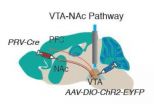Targeted micro-bubbles detect artery inflammation, MU study finds
Procedure done in pigs could potentially detect heart disease early in humans
2012-12-13
(Press-News.org) COLUMBIA, Mo. — Heart disease is a leading cause of death throughout the world. Doctors say that it is important to detect heart disease early before it becomes too serious. Now, researchers at the University of Missouri have found a way that they believe could help detect heart disease before it progresses too far as well as identify patients who are at risk for strokes.
In a study published in Medicine and Science in Sports and Exercise, Isabelle Masseau, an assistant teaching professor in the MU College of Veterinary Medicine, found that she could use targeted micro-bubbles to detect artery inflammation in pigs. She says that this procedure may help detect patients with heart disease or who are at risk for strokes before those ailments become too serious by monitoring artery inflammation, as that is an early warning sign of health problems. She says this procedure may also help monitor the effectiveness of artery inflammation treatments.
"It can be very difficult to detect early signs of heart disease, especially without the use of invasive procedures," Masseau said. "Doctors often have to wait until serious symptoms occur, such as chest pain or heart attacks, before they are aware of a problem, and many times that is too late. Targeted micro-bubbles have the potential to be able to detect early signs of heart disease very non-invasively."
Early signs of heart disease include inflammation on the insides of arteries, which leads to plaque buildup that could eventually result in heart attacks. Masseau was able to attach specific antibodies to tiny bubbles and then inject those bubbles into pigs with heart disease. The antibodies were able to seek out the inflammation in the pigs' arteries and attach themselves, along with the micro-bubbles, to the inflammatory sites. Then, using an ultrasound machine, Masseau was able to detect the targeted micro-bubbles that had gathered in the arteries of pigs. She says this is the first time the procedure has been successful in large animals.
"Because this procedure was successful in pigs, it also could potentially be reproduced in humans as well," Masseau said. "While it would still be a few years away, injecting targeted micro-bubbles into a human and then scanning them with an ultrasound would be a very simple procedure and could potentially help save lives."
Another part of Masseau's research involved studying pigs to observe the effects exercise has on artery inflammation. Before Masseau detected inflammation in the pigs using the targeted micro-bubbles, she submitted them to cardio exercise and measured its effect. Surprisingly, the exercise did not have any effect on reducing the arterial inflammation; however Masseau says that this does not mean that exercise is not important for heart health.
Masseau was joined in this study by Doug Bowles, a professor in the department of biomedical sciences in the MU Dalton Cardiovascular Research Center, and Michael Davis, a professor and associate head of the department of medical pharmacology and physiology in the MU Dalton Cardiovascular Research Center.
The early-stage results of this research are promising. If additional studies, including animal studies, are successful within the next few years, MU officials will request authority from the federal government to begin human trials. After this status has been granted, researchers may conduct human clinical trials with the hope of developing new treatments for heart disease.
This research is an example of the One Health/One Medicine area of Mizzou Advantage. Mizzou Advantage is a program that focuses on four areas of MU strength: food for the future; media of the future; one health/one medicine; and sustainable energy. The goals of Mizzou Advantage are to strengthen existing faculty networks, create new networks and propel Mizzou's research, instruction and other activities to the next level.
INFORMATION:
END
ELSE PRESS RELEASES FROM THIS DATE:
2012-12-13
SEATTLE – Younger women who wait at least 15 years after their first menstrual period to give birth to their first child may reduce their risk of an aggressive form of breast cancer by up to 60 percent, according to a Fred Hutchinson Cancer Research Center study. The findings, by Christopher I. Li, M.D., Ph.D., a member of the Public Health Sciences Division at Fred Hutch, are published online in Breast Cancer Research and Treatment.
"We found that the interval between menarche and age at first live birth is inversely associated with the risk of triple-negative breast ...
2012-12-13
Astronomers using the NASA/ESA Hubble Space Telescope have uncovered seven primitive galaxies from a distant population that formed more than 13 billion years ago. In the process, their observations have put forward a candidate for the record for the most distant galaxy found to date (at redshift 11.9), and have shed new light on the earliest years of cosmic history. The galaxies are seen as they were when the Universe was less than 4 percent of its present age.
A team of scientists using the Hubble Space Telescope has made new observations of the Hubble Ultra Deep Field ...
2012-12-13
Research by University of Notre Dame biochemist Anthony S. Serianni is providing new insights that could have important implications for understanding and treating diabetes.
Serianni points out that biological compounds known as dicarbonyl sugars are produced inside the human body from the natural breakdown of the simple sugar, glucose. The formation of these sugars is enhanced in diabetic patients because glucose concentrations in the blood and plasma of diabetics are significantly elevated.
"We investigated, under laboratory conditions that approximate those in the ...
2012-12-13
Some people like to have a few close friends, while others prefer a wider social circle that is perhaps less deep. These preferences reflect people's personalities and individual circumstances — but is one approach to social networks "better" than the other? New research suggests that the optimal social networking strategy depends on socioeconomic conditions.
Researchers Shigehiro Oishi of the University of Virginia and Selin Kesebir of the London Business School explore the benefits of social networking strategies in two studies published in Psychological Science, a ...
2012-12-13
PASADENA, Calif.—A team of astronomers led by the California Institute of Technology (Caltech) has used NASA's Hubble Space Telescope to discover seven of the most primitive and distant galaxies ever seen.
One of the galaxies, the astronomers say, might be the all-time record holder—the galaxy as observed existed when the universe was merely 380 million years old. All of the newly discovered galaxies formed more than 13 billion years ago, when the universe was just about 4 percent of its present age, a period astronomers call the "cosmic dawn," when the first galaxies ...
2012-12-13
WASHINGTON -- Using NASA's Hubble Space Telescope, astronomers have uncovered a previously unseen population of seven primitive galaxies that formed more than 13 billion years ago, when the universe was less than 4 percent of its present age. The deepest images to date from Hubble yield the first statistically robust sample of galaxies that tells how abundant they were close to the era when galaxies first formed.
The results are from an ambitious Hubble survey of an intensively studied patch of sky known as the Ultra Deep Field (UDF). In the 2012 campaign, called UDF12, ...
2012-12-13
As one of the top 10 barley producers in the world, Canada faces a problem of adapting to the 'new normal' of a warmer, drier climate.
The 2012 growing season was considered an average year on the Canadian Prairies, "but we still had a summer water deficit, and it is that type of condition we are trying to work with," said Scott Chang, a professor of soil science in the University of Alberta's Department of Renewable Resources in Edmonton, Canada.
Chang teamed with fellow crop scientist Anthony Anyia of Alberta Innovates – Technology Futures in 2006, following a severe ...
2012-12-13
A new study by biologists at Mercyhurst University focuses on the influence of climate change, particularly warmer winters, on the survival and potential fecundity of cold-blooded animals.
Cold blooded animals, or ectotherms, do not have an internal mechanism for regulating body temperature. Instead, they rely on solar energy captured by the environment.
The purpose of the Mercyhurst study, a collaboration of Michael Elnitsky, Ph.D., assistant professor of biology; and students Drew Spacht and Seth Pezar, is to assess the current and future impacts of climate change ...
2012-12-13
A specific pattern of neuronal firing in a brain reward circuit instantly rendered mice vulnerable to depression-like behavior induced by acute severe stress, a study supported by the National Institutes of Health has found. When researchers used a high-tech method to mimic the pattern, previously resilient mice instantly succumbed to a depression-like syndrome of social withdrawal and reduced pleasure-seeking – they avoided other animals and lost their sweet tooth. When the firing pattern was inhibited in vulnerable mice, they instantly became resilient.
"For the first ...
2012-12-13
Back in January, a new X-ray source flared and rapidly brightened in the Andromeda galaxy (M31), located 2.5 million light-years away. Classified as an ultraluminous X-ray source (ULX), the object is only the second ever seen in M31 and became the target of an intense observing campaign by orbiting X-ray telescopes -- including NASA's Swift -- and radio observatories on the ground. These efforts resulted in the first detection of radio-emitting jets from a stellar-mass black hole outside our own galaxy.
A ULX is thought to be a binary system containing a black hole that ...
LAST 30 PRESS RELEASES:
[Press-News.org] Targeted micro-bubbles detect artery inflammation, MU study finds
Procedure done in pigs could potentially detect heart disease early in humans




